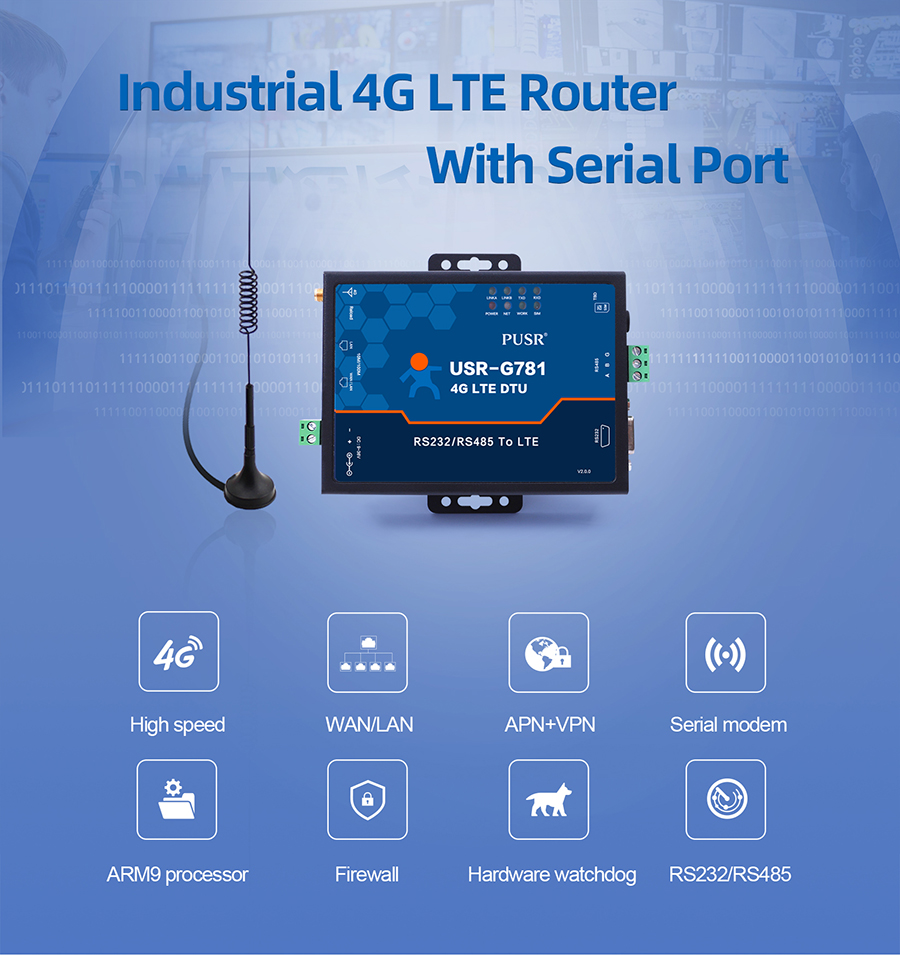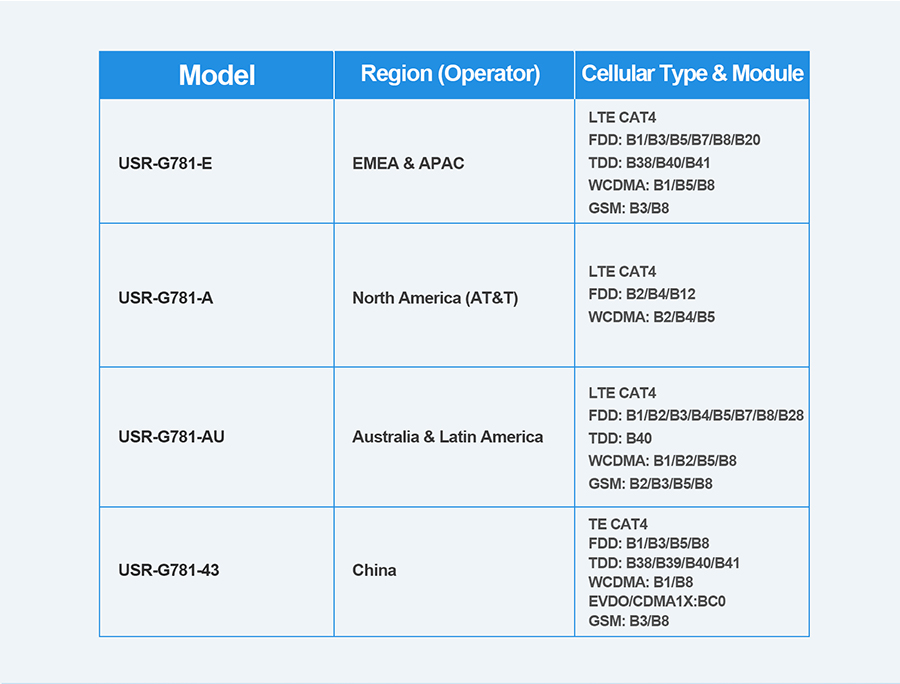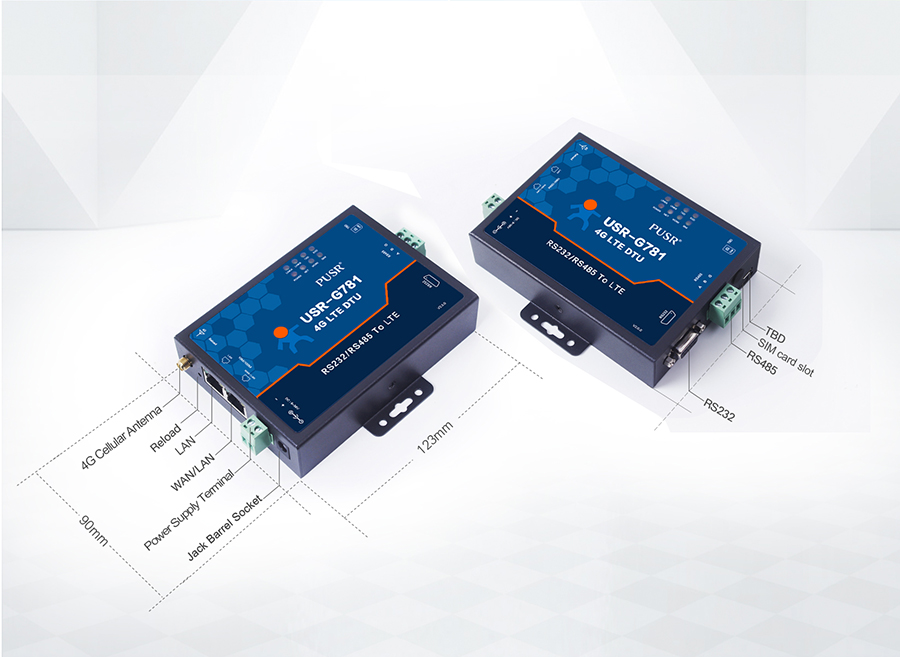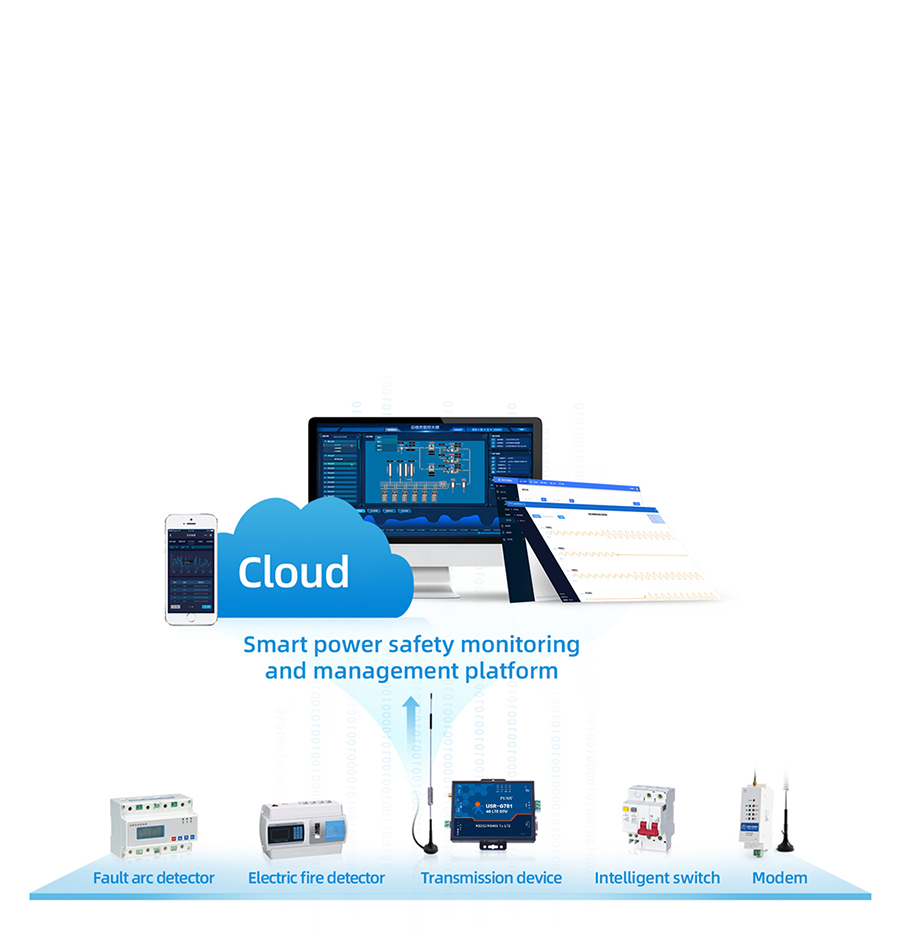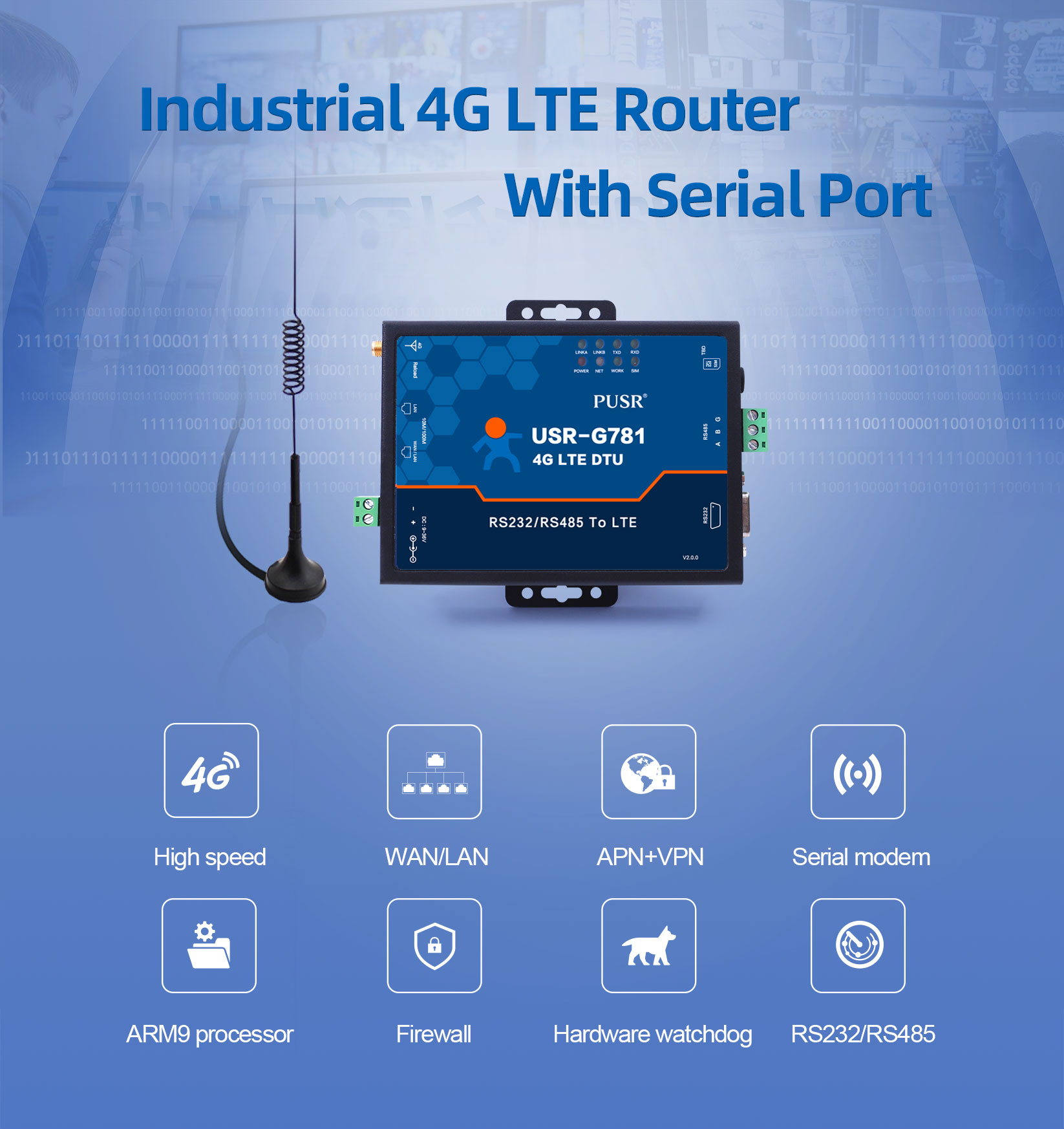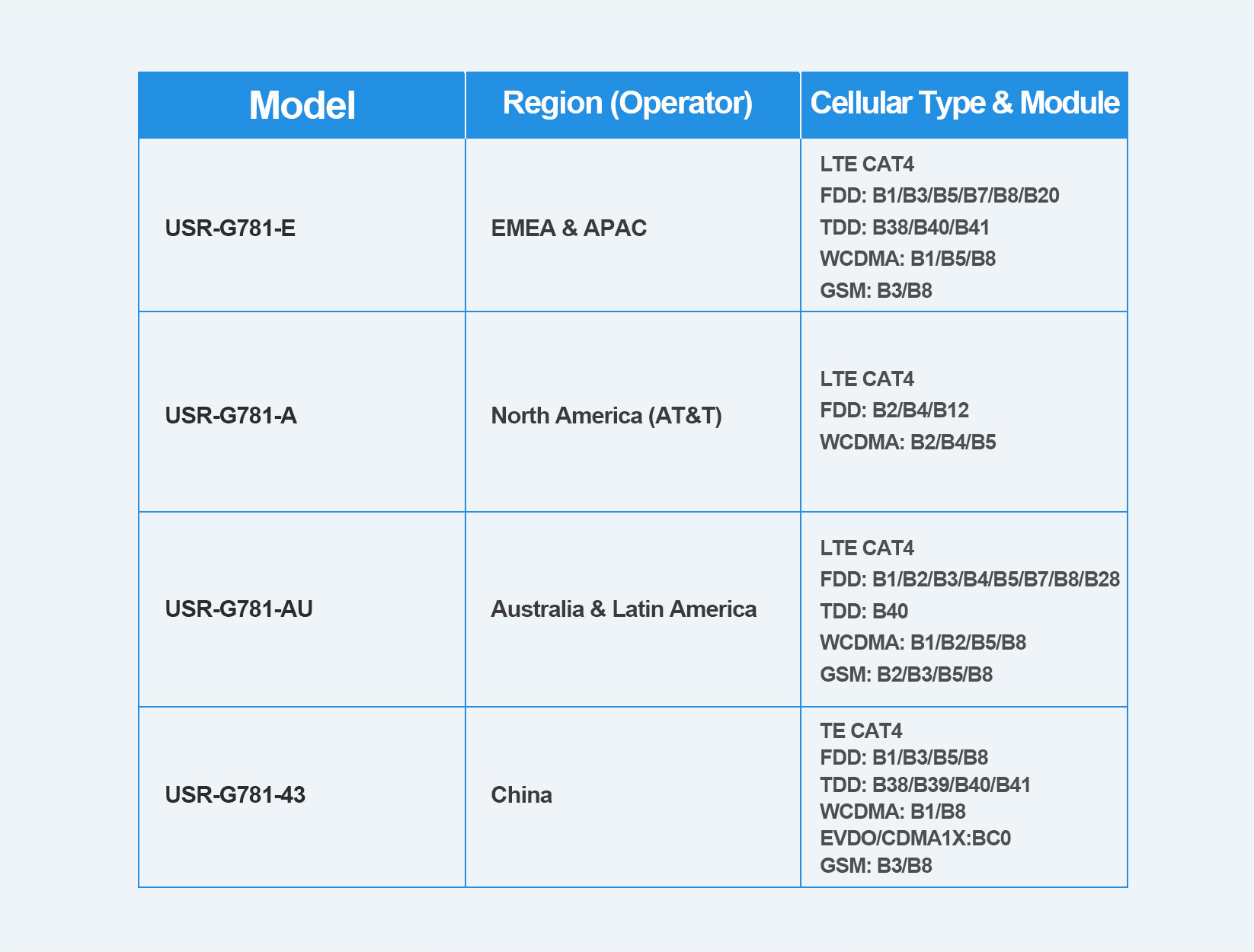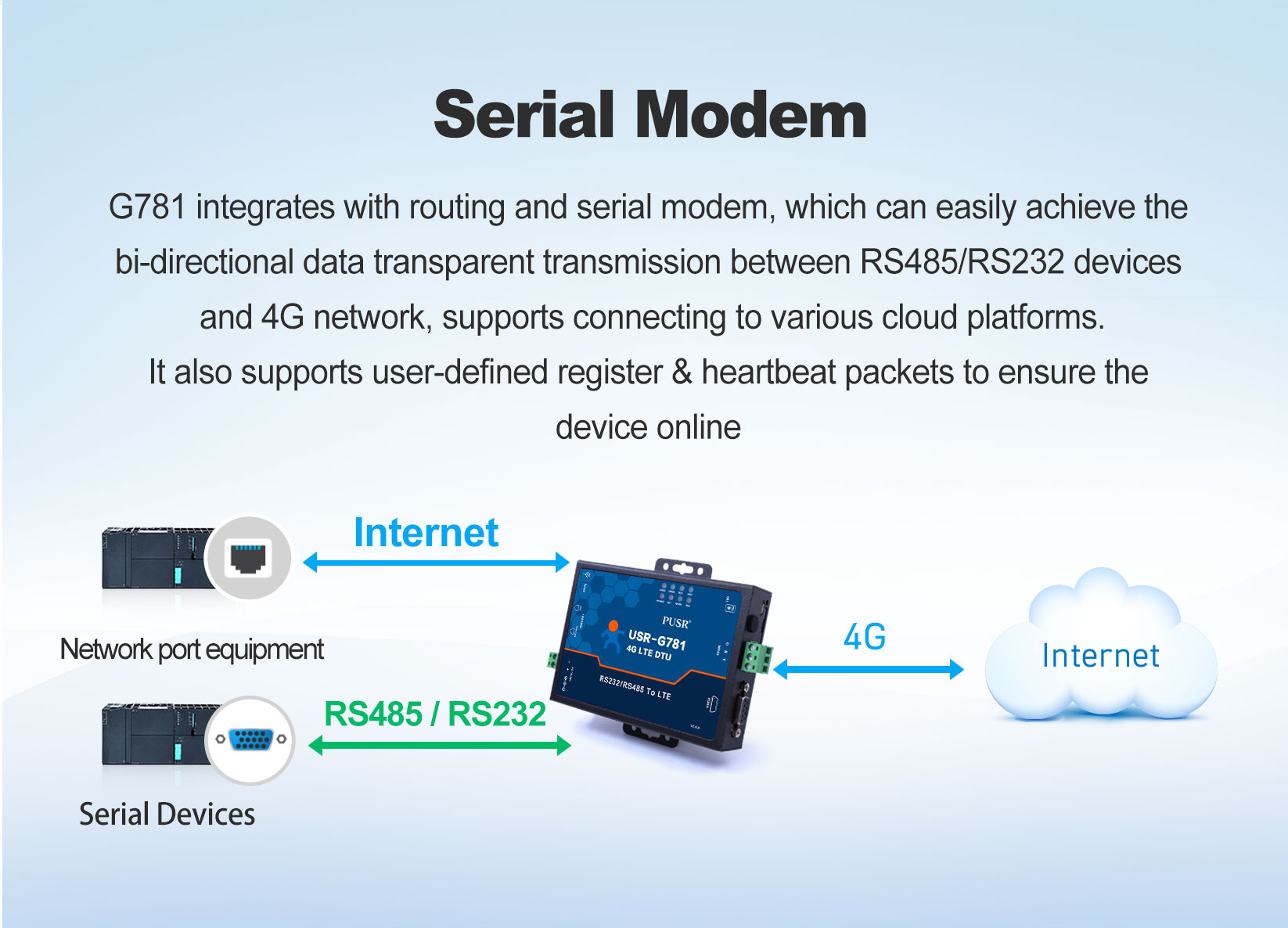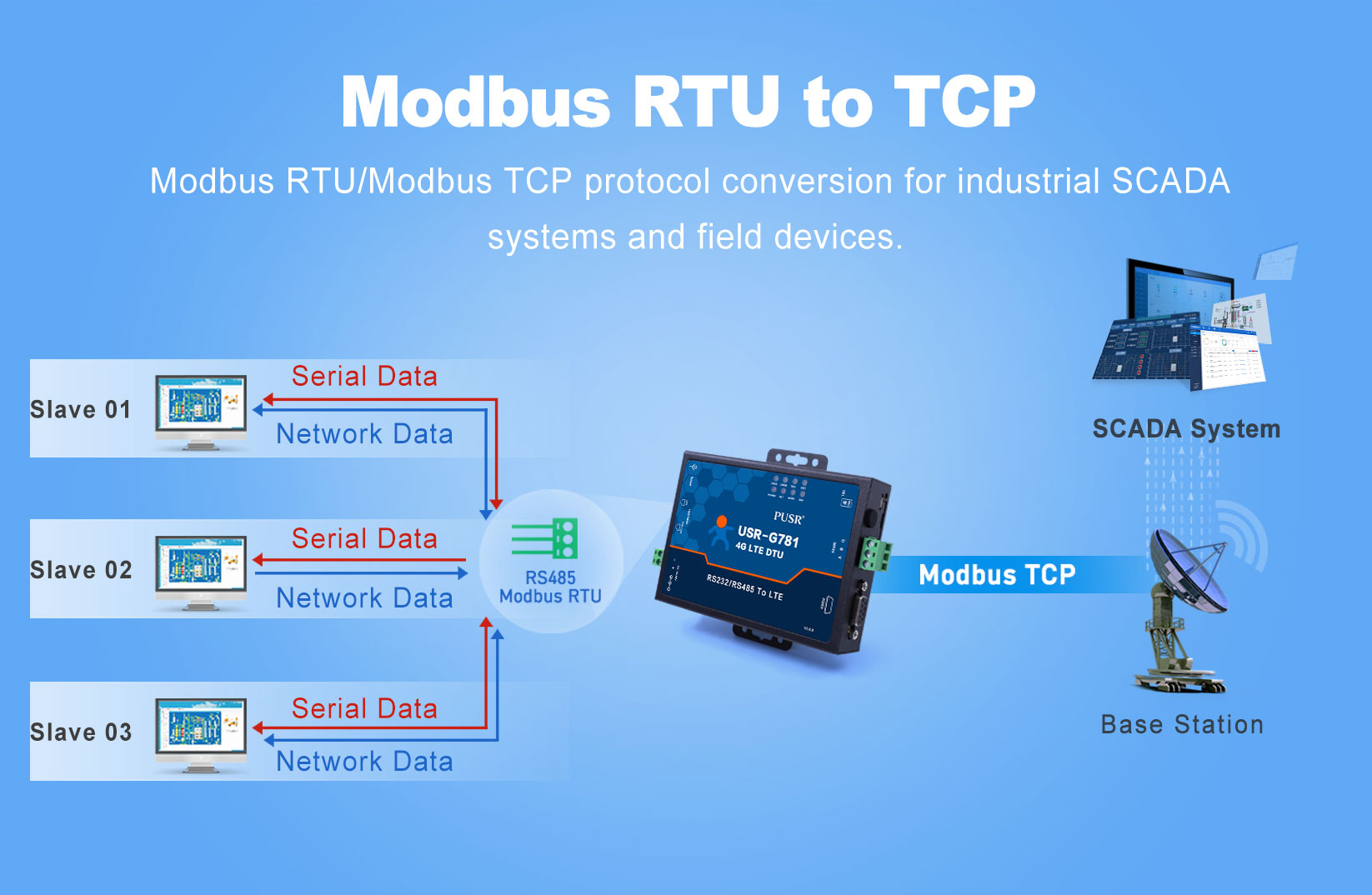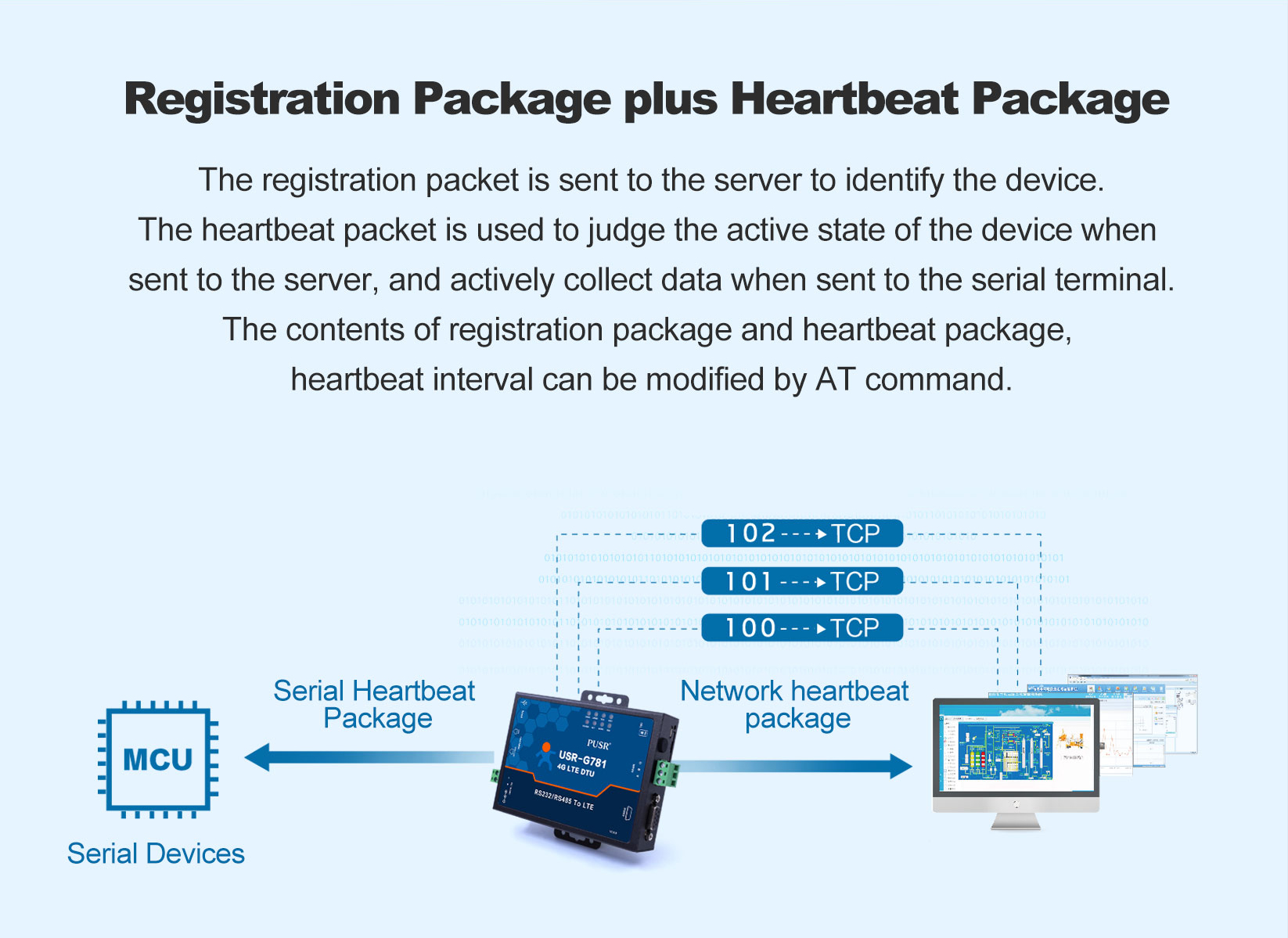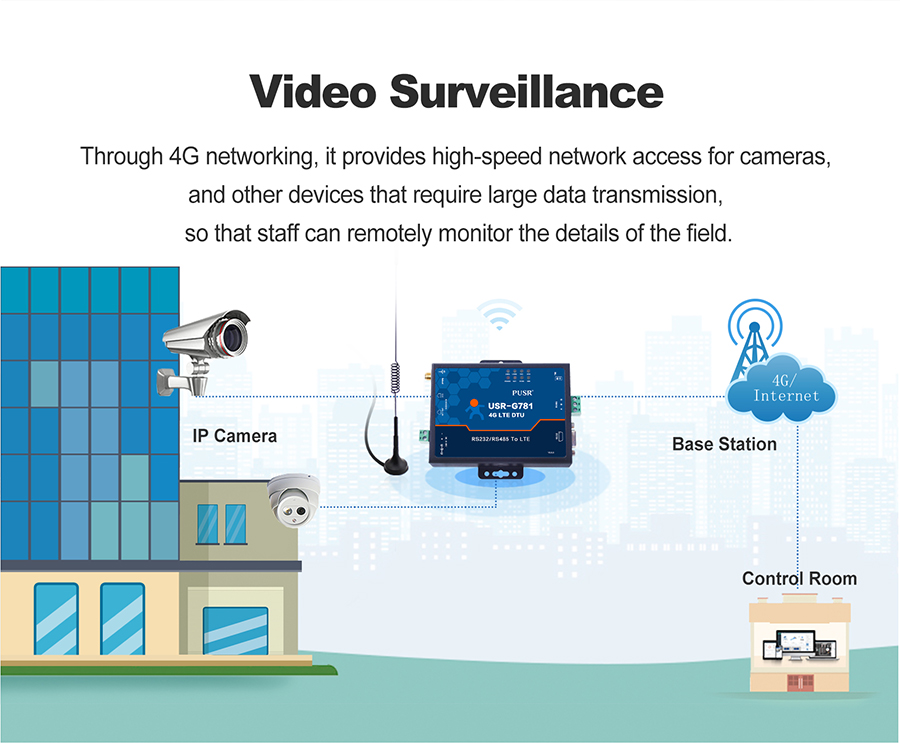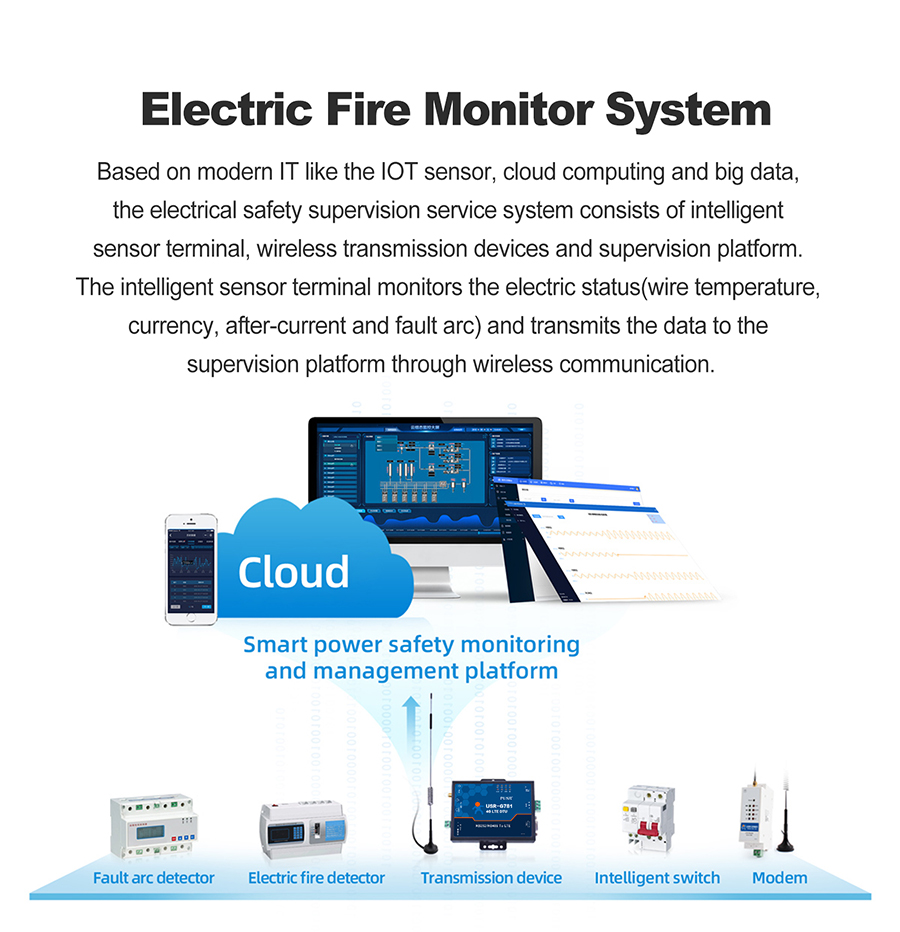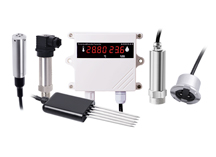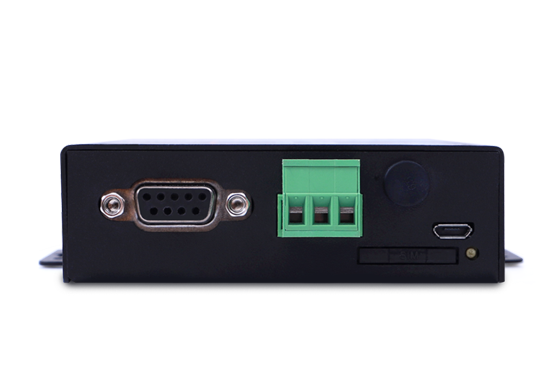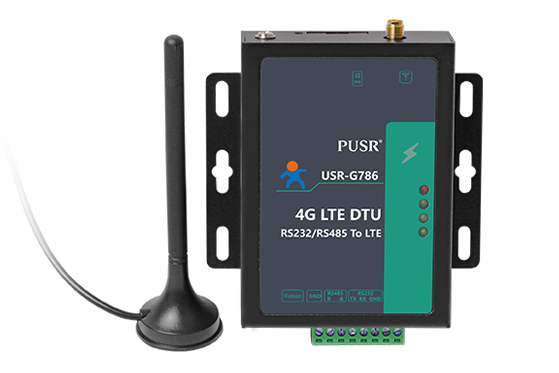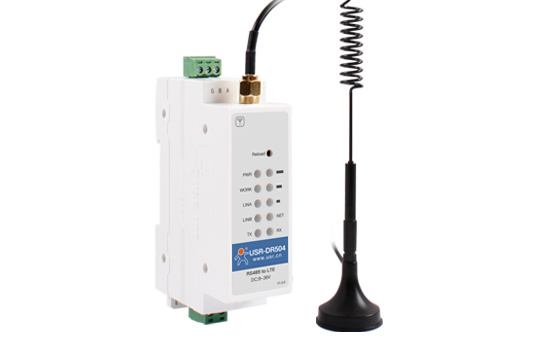In the wave of the Industrial Internet of Things (IIoT), seamless communication between devices and efficient data transmission have become core requirements for enterprises to enhance their competitiveness. The USR-G781 Cellular Modem Router launched by PUSR, as an industrial-grade IoT device that integrates the functions of a 4G/3G router and a modem, is becoming the communication hub in fields such as smart factories, energy management, and environmental monitoring, thanks to its powerful hardware performance, flexible networking capabilities, and rich protocol support. This article will provide an in-depth analysis of the value of this device from four dimensions: product positioning, core functions, application scenarios, and technical advantages.
1. Product Positioning: The "Dual-Mode Engine" for Industrial Communication
1.1 What is a Cellular Modem Router?
A Cellular Modem Router is a device in the IoT field that integrates cellular network (such as 4G/3G) access and routing functions. It not only has the data modulation and demodulation capabilities of traditional modems but also enables multi-device access, Network Address Translation (NAT), VPN tunnel establishment, and other functions through its built-in routing module, equivalent to a three-in-one solution of a "wireless access point + router + protocol converter."
Uniqueness of the Cellular Modem Router G781:
Dual-mode switching: It supports use as an independent modem, directly uploading data from serial devices (such as sensors and PLCs) to the cloud via a cellular network; it can also function as a router, providing shared Internet access services for multiple devices within a local area network.
Industrial-grade design: It features a metal casing (IP30 protection rating), wide voltage input (DC 9-36V), reverse connection protection, electrostatic/surge protection, and can adapt to extreme environments ranging from -35°C to +75°C.
Protocol compatibility: It supports Modbus RTU/TCP interconversion, HTTP/HTTPS protocol submission, and transparent transmission mode, seamlessly connecting industrial protocols with cloud platforms.
1.2 Hardware Architecture: Balancing High Performance and Reliability
The USR-G781 is based on an ARM9 processor and an embedded Linux system, with a built-in hardware watchdog that can monitor the system status in real-time and automatically restart in case of a failure. Its interface configuration includes:
Network interfaces: One WAN/LAN port (10/100Mbps adaptive), one LAN port, supporting multiple access methods such as PPPoE, static IP, and DHCP Client.
Serial interfaces: One RS485 interface and one RS232 interface, with a maximum baud rate of 460,800bps, compatible with Modbus RTU devices.
Antenna and SIM card: Standard SMA antenna interface, supporting dual SIM dual standby (for some models), and compatible with global mainstream operator frequency bands (such as B1/B3/B8, etc.).
2. Application Scenarios of the Cellular Modem Router G781: Comprehensive Coverage from Device Networking to System Integration
2.1 Core Application Areas
The design goal of the Cellular Modem Router G781 is to provide reliable communication for the "last mile" in industrial IoT. Its typical application scenarios include:
Scenario 1: Device networking in smart factories
Pain point: In traditional factories, devices such as PLCs, sensors, and CNC machine tools often use the Modbus RTU protocol but lack remote monitoring capabilities.
Solution: Connect the PLC via the RS485 interface of the Cellular Modem Router G781, use the Modbus TCP function to convert the data into an IP protocol, and then upload it to the Manufacturing Execution System (MES) or a private cloud platform via a 4G network.
Case: After deploying the Cellular Modem Router G781, a certain automotive parts manufacturer achieved real-time collection of temperature and pressure data on the production line, reducing the fault response time from 2 hours to 10 minutes.
Scenario 2: Remote monitoring in energy management
Pain point: Power equipment (such as transformers and distribution cabinets) is widely distributed, with high manual inspection costs and data lag.
Solution: Connect the USR-G781 to an electricity meter or smart sensor, submit voltage and current data to an energy management platform via the HTTP protocol, and ensure data transmission security in combination with VPN functions.
Case: A certain photovoltaic power plant used the VPN tunnel of the USR-G781 to achieve encrypted transmission of inverter operation data, reducing annual operation and maintenance costs by 30%.
Scenario 3: Wide-area coverage in environmental monitoring
Pain point: Remote areas such as atmospheric monitoring stations and water quality testing points lack wired networks, resulting in unstable data transmission.
Solution: The USR-G781 supports multi-network switching (4G/3G/2G) and maintains an online status through heartbeat packets, automatically reconnecting even during network fluctuations.
Case: A certain environmental protection bureau deployed the USR-G781 in mountainous areas, achieving real-time upload of PM2.5 and pH value data, and increasing the data integrity rate to 99.5%.
2.2 Networking Flexibility: Multi-network Backup and Protocol Conversion
The Cellular Modem Router G781 supports simultaneous online access to wired and 4G networks. When the primary link (such as Ethernet) fails, it can automatically switch to the cellular network to ensure business continuity. In addition, its protocol conversion function can solve the problem of protocol fragmentation in industrial sites:
Modbus RTU/TCP interconversion: Convert the Modbus RTU protocol of serial devices into a TCP protocol to be compatible with SCADA systems.
Transparent transmission mode: Directly transmit data to a specified server without modifying the original device protocol.
HTTP/HTTPS submission: Support submitting data to cloud platforms in GET/POST methods, compatible with mainstream services such as Alibaba Cloud and AWS.
3. Core Function Analysis: Dual Empowerment of Modbus and VPN
3.1 Modbus Function: Breaking Protocol Barriers and Enhancing Data Value
As the most commonly used communication protocol in the industrial field, Modbus has long coexisted in its RTU version (serial) and TCP version (Ethernet), leading to difficulties in device interconnection. The Modbus function of the USR-G781 solves this problem in the following ways:
3.1.1 Modbus RTU to TCP: Seamless connection to SCADA systems
Traditional pain point: SCADA systems are usually based on the TCP/IP protocol, while on-site devices (such as sensors and frequency converters) mostly use Modbus RTU serial communication, requiring a protocol conversion gateway for interconnection.
USR-G781 solution: Built-in Modbus RTU to TCP function, allowing users to directly connect devices via the RS485 interface without additional gateway configuration. The router automatically encapsulates serial data into TCP packets and uploads them to the SCADA host.
Benefits: Reduce hardware costs (save gateway expenses), lower wiring complexity (replace Ethernet cables with serial cables), and improve data collection efficiency (real-time performance < 1 second).
3.1.2 Transparent transmission mode: Preserve original protocols and simplify integration
Applicable scenario: When the device protocol is non-standard or the original communication logic needs to be retained, the transparent transmission mode can transmit data as is without protocol parsing.
Operation example: Users configure the USR-G781 as transparent transmission mode via AT commands. The Modbus RTU packets sent by the device will be directly sent to the cloud via the 4G network. The cloud server parses the data and returns instructions, which the router then transmits back to the device.
Advantages: Extremely high compatibility, suitable for various customized protocol devices.
3.2 VPN Function: Building a Secure Enterprise Private Network
VPN (Virtual Private Network) is the core technology for ensuring data security in industrial IoT. The Cellular Modem Router G781 supports multiple VPN protocols such as PPTP, L2TP, OpenVPN, IPSec, GRE, and SSTP, and has multiple encryption functions (such as AES-256), enabling enterprises to build low-cost and highly secure remote access channels.
3.2.1 Reduce enterprise costs: Replace dedicated lines and improve scalability
Traditional solution: Enterprise branches usually interconnect via dedicated lines (such as MPLS), with annual costs reaching tens of thousands of yuan.
USR-G781 solution: Use a 4G network + VPN tunnel to connect branches to the enterprise intranet, with costs only 30%-50% of those of dedicated lines.
Case: After deploying the USR-G781, a certain chain supermarket achieved encrypted transmission of POS machine data from stores nationwide, saving 400,000 yuan in annual network expenses.
3.2.2 Enhance security: A four-layer protection system
Tunnel technology: Encapsulate data in an encrypted tunnel to prevent man-in-the-middle attacks.
Encryption and decryption technology: Support algorithms such as AES and 3DES to ensure data confidentiality.
Key management: Adopt a public-private key pair mechanism and regularly replace keys.
Identity verification: Support protocols such as CHAP and MS-CHAP to prevent illegal access.
3.2.3 Remote management: Improve operation and maintenance efficiency
The Cellular Modem Router G781 supports remote access to devices via VPN, allowing engineers to complete parameter configuration, firmware upgrades, and other operations in the office without on-site maintenance. For example, a certain wind farm remotely debugged wind turbine controllers via VPN, reducing the fault repair time from 3 days to 4 hours.
4. Technical Advantages: Details Consideration in Industrial-Grade Design
4.1 Reliability Design: Comprehensive protection from hardware to software
Hardware watchdog: Built-in independent watchdog chip, automatically restarting the system in case of a crash to ensure 7×24-hour operation.
Power protection: Support DC 9-36V wide voltage input, with reverse connection protection and overvoltage/overcurrent protection.
Electromagnetic compatibility: Passed IEC61000-4-2 (electrostatic), IEC61000-4-4 (electrical fast transient burst), and IEC61000-4-5 (surge) Level 3 certifications, adapting to strong interference environments.
4.2 Management Convenience: Dual modes of cloud and local
Someone Cloud service: Support device status monitoring, log query, and remote configuration, reducing the operation and maintenance threshold.
AT command set: Quickly obtain device information (such as signal strength and IP address) by sending AT commands via the serial port.
Local Web management: Built-in Web interface, supporting parameter configuration, firmware upgrade, and network diagnosis.
5. Cellular Modem Router USR-G781 - The Communication Foundation of Industrial IoT
The USR-G781 Cellular Modem Router from PUSR, with its "dual-mode engine" as the core, solves the pain points of difficult device networking, insecure data transmission, and high operation and maintenance costs in industrial sites through Modbus protocol conversion and VPN secure channels. Its industrial-grade design, flexible networking methods, and rich functional extensibility make it an ideal choice for fields such as smart factories, energy management, and environmental monitoring. In the future, with the popularization of 5G technology, upgraded versions of the USR-G781 (such as those supporting 5G NR frequency bands) will further promote the evolution of industrial IoT towards high-speed and low-latency directions, providing stronger communication support for enterprise digital transformation.
